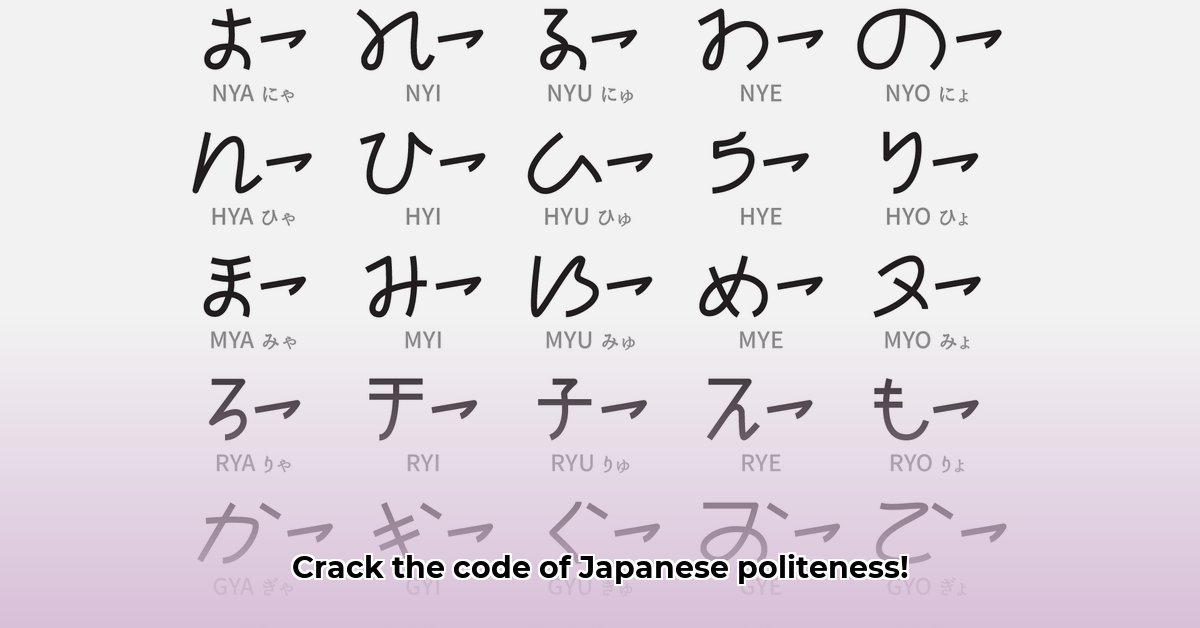
Eish, wanna chat like a pro in Japanese? Then you gotta master those Japanese honorifics! They're not just about politeness; they're about showing respect and understanding of Japanese culture. Get 'em right, and you'll make a great impression. Get 'em wrong… well, let's just say it could be a bit awkward. This guide will sort you out, from the basics to the more tricky stuff. Whether you’re planning a trip, doing business, or just want to impress your Japanese mates, we've got you covered.
Cracking the Code: Your Starter Pack of Honorifics
Let’s begin with the most common honorifics – your essential building blocks. Mastering these will seriously boost your politeness points! We’ll cover san, kun, chan, sama, sensei, and shi. Each has a specific meaning and usage. Choosing the right one is crucial.
Here’s a table to help you keep things straight:
| Honorific | When to Use | Example | Notes |
|---|---|---|---|
| さん (san) | General politeness; most situations; safest bet! | 田中さん (Tanaka-san) | Use this if you’re unsure; it's rarely wrong. |
| くん (kun) | Mostly for males younger than you, or close male friends | 佐藤くん (Sato-kun) | Avoid with older men or strangers; it can sound patronising. |
| ちゃん (chan) | Children, close female friends, affectionate term. | 美咲ちゃん (Misaki-chan) | Shows closeness; avoid with adults unless very familiar. |
| さま (sama) | Shows extremely high respect; formal settings. | 社長さま (Shachou-sama) | Use for very important people or in very formal situations. |
| 先生 (sensei) | Teachers, doctors, experts, professionals. | 山田先生 (Yamada-sensei) | Shows deep respect for knowledge and expertise. |
| 氏 (shi) | Formal written situations; rarely spoken. | 鈴木氏 (Suzuki-shi) | A very formal, written equivalent of "Mr." or "Ms." |
Level Up: Intermediate Honorifics and Beyond
Okay, you’ve nailed the basics. Now let’s delve deeper. Family relationships and job titles change things up. It's like addressing your aunt differently from your boss, right?
Think about terms like okasan (mother), otousan (father), oneesan (older sister), oniisan (older brother). These show how detailed Japanese is about respect and family.
Job titles often have specific honorifics too. For instance, you'd address your boss as kachou-sama (section chief) – showing respect for their position. Learning these makes your communication smoother and more appropriate in the workplace.
The Art of Nuance: Advanced Honorific Strategies
Here’s where it gets interesting! The real skill lies in understanding the situation. Age, your relationship, social standing, even the vibe of the conversation matter. Even san has subtleties! You might use it for a friendly shopkeeper, but a more respectful term would be better for someone much older or more senior.
The best tip? Pay attention to how Japanese people address each other – you'll spot patterns and learn to choose correctly. Think of it as a skill you'll refine over time.
Putting Your Knowledge to the Test: Practice Makes Perfect
Let's try some scenarios for practice:
- You meet a new female colleague, roughly your age. How do you address her?
- You're talking to your doctor. What honorific do you use?
- How would you address the owner of a small family restaurant?
- You're speaking to your grandfather?
Think about the context and your relationship with the person. When in doubt, more politeness is always better!
Keep Learning, Keep Growing!
Mastering Japanese honorifics takes time. Don’t stress if you make mistakes – everyone does! The more you immerse yourself in Japanese language and culture, the easier it will become. Keep practicing, and you’ll be confidently navigating the world of Japanese politeness in no time! Ganbatte! (Good luck!)